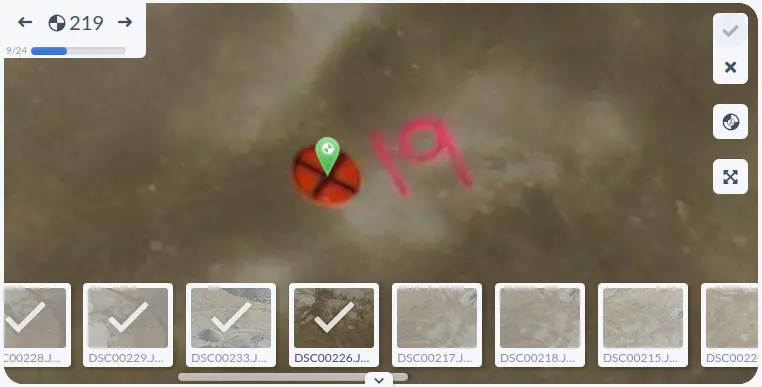Add Imagery and More



Dense point clouds are the foundation of nearly every mapping product and consist of a set of points in space representing the surfaces of scanned objects. The dense point cloud can be used for comparison against CAD models, in visualization, and 3D printing applications. The best dense point clouds are defined by several key features. The greater density of a point cloud allows for modeling and measurement of finer features. Also, it is critical that the points of the dense cloud cover the entire area of interest as any gaps in point coverage will translate to other data products.
It is not sufficient to simply have a dense point cloud - excellent accuracy of point locations is critical to producing valuable data products. The dense point clouds produced by PixElement processing feature unparalleled density. The key to this density is our ability to calculate the relative position of the cameras to sub-pixel accuracies. This accuracy is cutting-edge, the result of extensive research & development work.

Surface models are a surfaced version of the dense point cloud. This surface provides a complete surface view of the point data.
Surface models provide a more compact, smaller file format for conveying the data captured in a point cloud.

Digital elevation models, or DEMs, are uniformly sampled grids of elevation data. DEMs are valuable as base layers in GIS systems and can be used for terrain visualization, flood modeling, and volume calculations.
Using the imagery that you collect, PixElement processing produces high accuracy DEMs and terrain models suitable for many different applications. A good digital elevation model is produced using a sampling algorithm that produces extremely accurate data that is not impacted by any outlier points. PixElement processing produces dense, precise, and accurate digital elevation models to meet your every need.




Ortho-mosaiced images transform simple aerial photographs into maps. Orthophotos can service as the base layer in many GIS and other mapping applications such as displaying road vectors and contour. Additionally, orthophotos can be used as a source of measurement much like a traditional map. The orthophoto offers a sweeping view of a large scene which allows for more intuitive analysis versus a disconnected set of raw imagery.
A quality orthophoto is not simply a collection of images that have been stitched together. A good orthophoto is perspective corrected so that the contents of the orthophoto are true, accurate representations of the 3D scene. This perspective correction allows for accurate measurements to be taken directly from the photograph. Orthophotos produced by PixElement processing are expertly orthorectified, with the image being corrected for scale, camera tilt, lens distortion, and topographic relief. PixElement processing produces truly measurably, map-quality images.




Contour maps clearly illustrate the change in elevation by tracing fixed elevations with contoured lines. These maps provide valuable insight for a variety of applications and are particularly useful in construction for mapping water flow and drainage.
The PixElement processing platform allows you to specify the contour interval of your maps with just one click of the mouse. The contour maps produced by PixElement processing can be independent maps as well as draped over an orthophoto for maximum utility.


Are you looking to quickly compute how much raw material is coming and going from your worksite, or are you evaluating the emergency response to a natural disaster? Volume change maps illustrate changes in terrain over time without the need for a dedicated survey team. Good volume change maps are built from ultra dense point clouds resulting in fantastically accurate estimates of volume.
With PixElement processing, you can make decisions in real time based on your current material supply levels.


Unlock the power of PixElement Cloud’s processing for as little as $99, or start a free 14 day trial of PixElement Desktop.
The PixElement processing engine relies on a combination of newer computer vision techniques and classical photogrammmetry to rapidly and accurately reconstruct 3D from imagery. User imagery is broken down into many small, bite-size pieces that can be processed by hundreds of CPUs at once.
Pixelement’s processing engine then crunches away to process the images and reassembles those bite-size pieces into completed 3D data, without any loss in accuracy or quality.